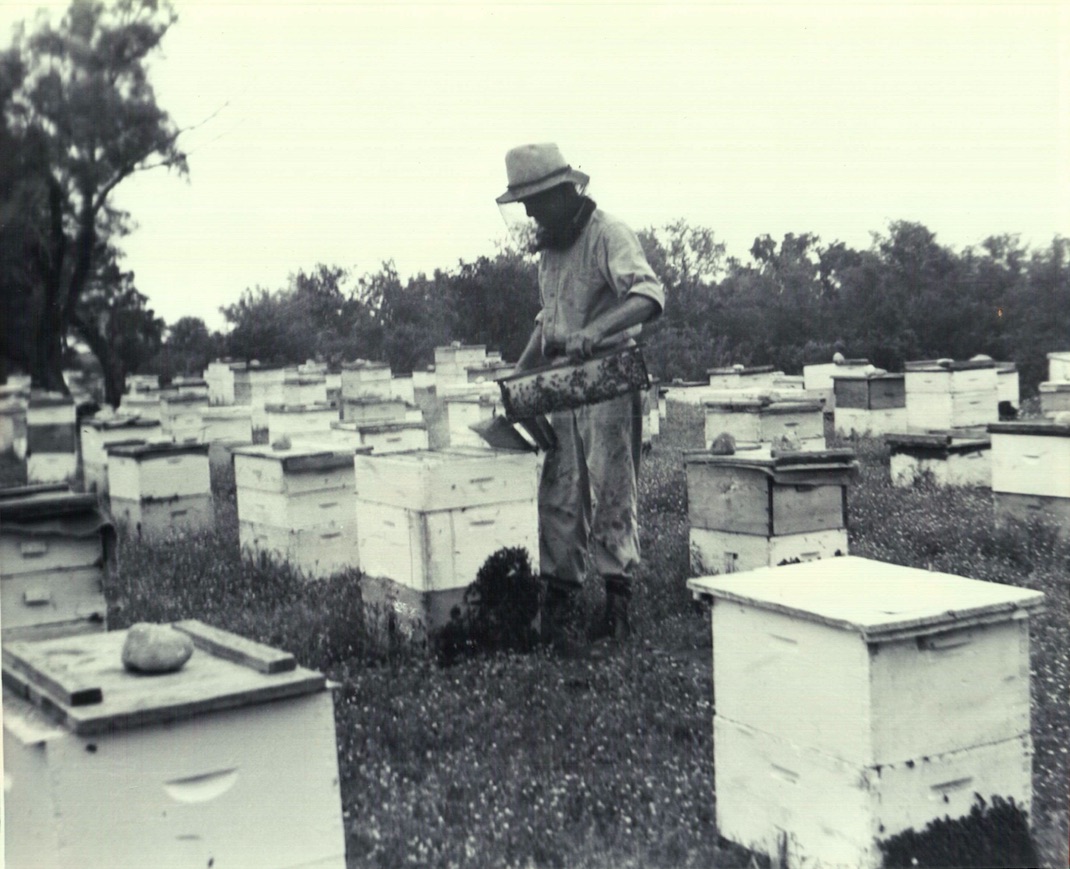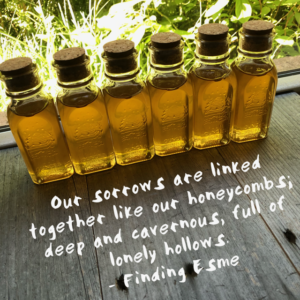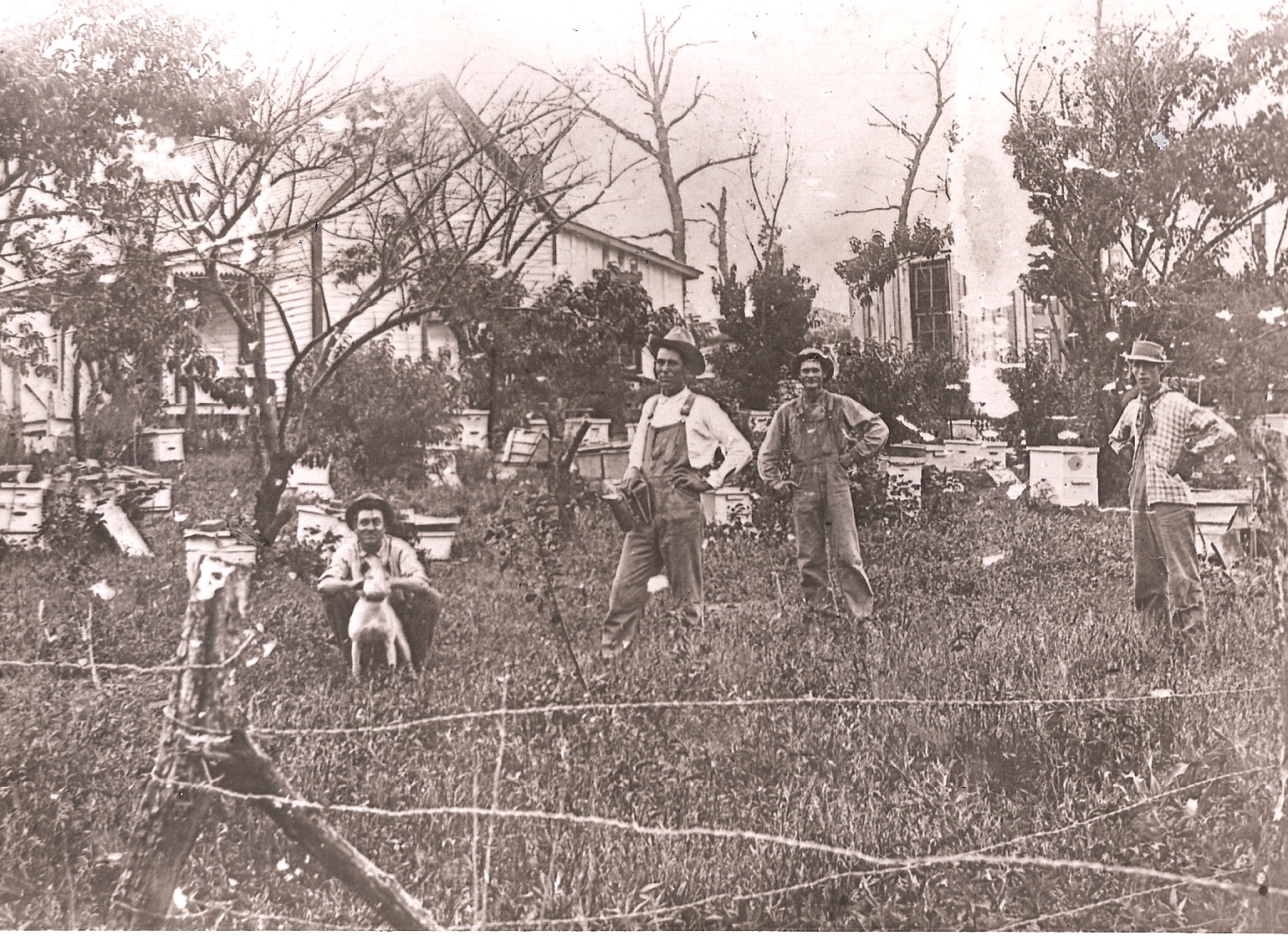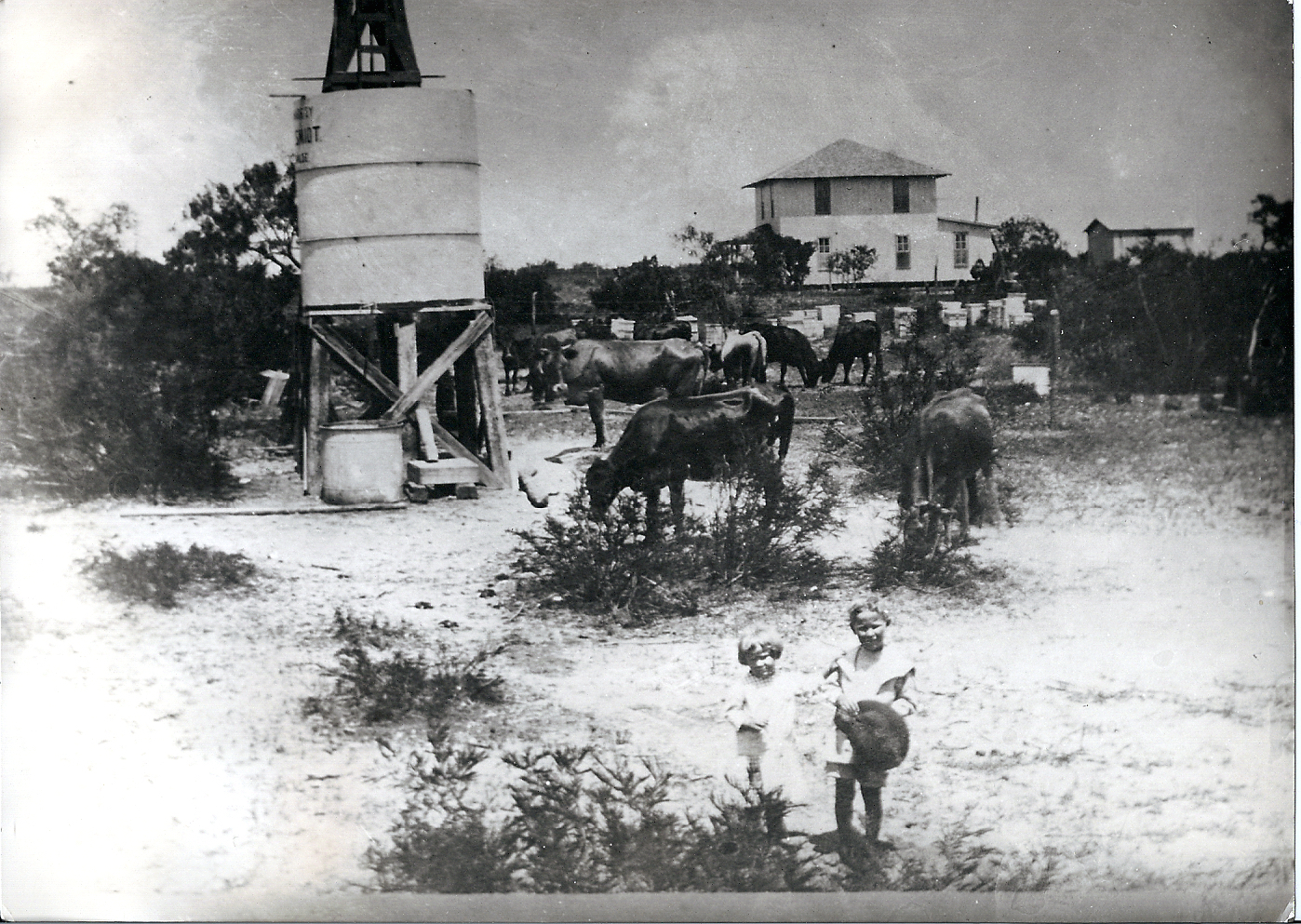
My great-uncle Will Bostick with his bees in Uvalde County
In FINDING ESME (Greenwillow Books Aug 14 2018), The McCauley family has had a long history of raising bees in the wilds of the woods of north Texas. Esme’s grandmother Bee and her sister Sweetmaw are even named after the family business. Esme has always been deathly afraid of the bees; to her they represent the sorrow and loss she has long felt towards no-good daddy Harlan who has been missing for three years.
“My daddy Harlan loved the bees; they were restless just like him. He made them hives every year with two-by-fours. He’d nail his paintings of large colorful flowers on the sides. He put the hives in the woods, seeming to know where the bees wanted to be. When he moved the hives to a new spot, he called them with a cowbell, and like a big black cloud, they followed him to their new home.”

FINDING ESME (Greenwillow Books/Harper Collins)
Texas has had a long colorful history of bee-keepers. The honey bee is not thought to be native to Texas and perhaps was brought over by European travelers sometime after the founding of Jamestown in 1607. Since many yeoman farmers in England kept bees, the theory is colonists brought them with them (or were they “passengers” on the ship?). An account as early as 1638 describes a John Earle being brought to a new England town to give instruction on beekeeping. Through the centuries, bee-keeping slowly spread down through the Southern states until finally reaching Texas, although some believe the bees might have been brought by the Spaniards up through Mexico. When Stephen F. Austin began his colonization of Texas in 1821, the first record of bee-keeping in Texas is mentioned. A cousin of Stephen F. Austin, Mrs. Austin Holly, wrote:
“. . . The forests of Texas are visited by numerous swarms of bees, which deposit their luscious stores in their hollow trees, and thus give rise to a profitable branch of trade in which many are employed. . . .”
A little over a decade later, Davy Crocket writes in his journal (1836) of an encounter with a “bee-hunter.”
“He told me that honey trees are abundant in Texas, and that honey of an excellent quality, and in any quantity may be obtained from them. . . .The wax alone, thus obtained is a valuable article of commerce in Mexico, and commands a high price. It is much used in churches, where some of the candles made use of are as long as a man’s arm.”
By 1901, according to The Southland Queen, a bee-keeping journal of the time, there were 150,000 bee colonies in Texas! Imagine that – 150,000 bee colonies. It’s mind boggling.

My great-grandfather Oscar Oliver Saunders with his bee hives in Fannin, Co, Texas (around 1910)
My maternal great-grandfather Oscar Oliver Saunders (1881-1969) kept bee aviaries on both his farms – first in north, Texas near Trenton (Fannin Co) and later west of San Antonio in Kinippa (Uvalde, Co) and also an aviary at the Black Water Hole on the Dry Frio River. His aviary in Trenton was kept under the peach orchard to protect the hives from the hot sun. My second cousin, Allene Mandry remembers always having honey on the table growing up in Knippa. “I was never stung by the bees as I was there all the time. Grandpa said bees got to know the smell of people and that they know strangers. Mother used the honey to sweeten everything, and the honeycombs were a special treat. They’re hard to find today as the bees don’t even have to make their own combs.” I’d like to explore my family’s beekeeping history in greater depth in a future blog post.
Happy Reading! -Suzanne

My great-uncle Laurence Saunders and his sister “Polly” Jean Saunders – their father’s bee aviary in the distance. (Knippa, Texas)
Soucres:
- Dumas, Clark Girffith Agriculture in Early Texas, (SMU Dissertation,1952, pg. 1-9)
- photographs provided by Allene Mandry

2 Comments
Ctopher
Nice work here. You kept my interest throughout the entire article. You are a very good writer. I hope you will continue to publish your blog and look forward to reading more by you. Best of Luck to You. -ctopher
Esmeralda Munoz
Wow! I got hooked not only because Esme is like short for my name, Esmeralda, but the amazing way you write. I will definitely follow you and look forward to read more of your writing.